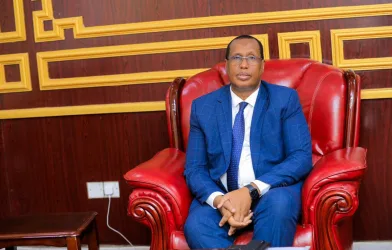
Hours after National Treasury Cabinet Secretary Henry Rotich opened a three month duty free window for the importation of sugar into the country special gazette notice dated October 4, duty free sugar was in the country.
Investigations by Saturday Standard indicate that thousands of bags entered into the country through the boarder point from Somalia compounding sugar players.
It could only have taken two months to realistically import from destinations like Brazil and other South American countries where sugar is grown in bulk. But immediately the special gazette notice by the treasury announced duty free importation of sugar until December 31, to plug the country’s sugar deficit bags of sugar ‘entered’ into the country.
Unknown to the government is that the Treasury CS could have legalised the entry of smuggled sugar from the country that was moving into the country anyway.
As the heated debate raged in parliament over the safety and legality of the importated sugare, was a deadly business rivalry between a group of business people who were smuggling sugar from Brazil to through the port of Kismayu and sugar millers who had been given the notice to import duty free.
Notably, though the importation only opened window to sugar millers and not businessmen, the group of business people stocked millions of kilogrammes of sugar in the Kenyan market.
“Duty shall not be payable to sugar which will be loaded onto vessels between 1st September 2017 and 31st December 2017, destined to a port in Kenya and consigned to a local sugar miller,” Treasury Cabinet Secretary Henry Rotich said in the notice.
The waiver of duty was seen as response to the acute drought at the start of the year that affected sugarcane production.
But Sweet Secrets: Sugar Smuggling and State Formation in the Kenya – Somalia Borderlands a report released last year sheds light as to why it was easy to have sugar in the country minutes after Rotich gave way for importation of duty free sugar.
The report a Danish Institute for International Studies (DIIS) WORKING PAPER 2017 prepared by Jacob Rasmussen, Associate Professor, Roskilde University details how the smuggling of sugar has been active for the last two decades.
“In 1996 an entrepreneurial group of Somali businessmen imported a large quantity of Brazilian sugar for local sale and distribution. Soon others imitated the idea and trade increased …but it is also smuggled into the country and often repackaged into bags by local millers.” reads the report.
Notably, the report details that raw sugar accounts for sh1.8trillion (US18.8billion) 10percent of total Somali imports rated at US $188 billion.
“In other words, sugar importing is enormously lucrative and important for the local economy on both sides of the border.” said the report. The sugar imported from Somalia the report observed was central for covering the production and import deficit in Kenya.
Kenya consumes 870,000 tons of sugar against a production of 600,000 tons per year. Though the deficit has been met with sugar importation mainly from the COMESA region under strict quotas, as part of a plan to protect local sugar miller, the importation in Kenya however has been riddled with suspicion with.
To show the magnitude of the smuggling, the report noted that in 2014 around 230 trucks left Kismayu every week, each carrying 14 tonnes of sugar, and even though they are no longer in control of the harbour Al-Shabaab charges Sh100,000 (US $1000) per truck.
Checkpoints between Kismayu and the Kenyan border divided among security officers groups also including peace keepers and Jubaland officials and local police.
The sugar from Kismayu port is manually loaded onto trucks, four-wheel drive vehicles the report says and even donkey carts to cross the border ‘rat routes’ that circumvent the border posts to avoid the payment of bribes, random checks by the Kenyan Revenue Authority (KRA), and the occasional confiscation. “On the Somali side of the border in Dhobley the Jubaland administration collects a further tax of US $600 per truck.
To cross the border at Liboi truck owners pay another Sh60,000 (US$600) local security officers (Note i have put this to refer to KDF who are mentioned adversely in the report) and an expected final Sh60,000 (US $600) to the police at the Dadaab refugee camp.”
Lost revenue Based on interviews and observation the report estimates that 150million kilogrammes of illegal sugar worth Sh40billion entered Kenya from Kismayu in 2014.
In the sugar journey, the Jubaland officials are said to charge a tax of Sh2000 (US $20) per sack on imported sugar that would later be repackaged in to local sugar brands like Mumias Sugar in some depots in the country.
The sacks usually coming in sizes of 50 kg and occasionally 100 kg. The report noted that the several ‘levies’ did not include the risk of being caught by the KRA at a weighbridge or a random police or Al-Shabaab checkpoint if the trip is going further north towards Wajir and Mandera.
In Kenya the DIIS working paper report noted that the roads are of a comparatively better standard and so are the trucks.
The drivers on the Kenyan side of the border carry several tons more than their counterparts on the Somali side of the border to enhance the profit. On arrival into Kenya, Sugar warehouses are neatly distributed along the route from the border at Liboi until Mandera in the northern triangle between Ethiopia, Somalia and Kenya.
Source: The Standard Kenya
Kenya: Report on sugar smuggling could explain the complex sugar importation saga
Published: September 10, 2018







